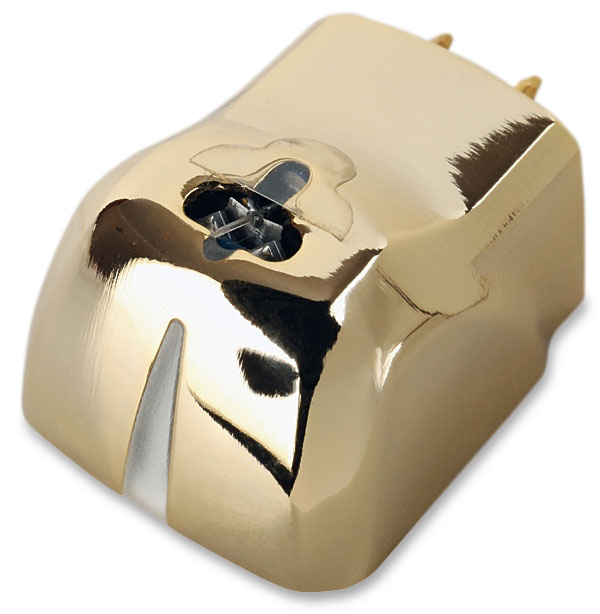DS Audio Grand Master EX Cartridge Full Diamond
While both 'Grand Masters' share the same dual-mono LED/photocell, and decorative white LED at the front, it is their stiffer diamond cantilevers and reduced moving mass that most clearly benefit their performance over DS Audio's boron [HFN Dec '22] and alloy-cantilever [HFN Oct '21] models. Although these optical designs are free of coils and magnets the precise communication of information between groove and – in this instance – beryllium shading plates [just visible in the inset picture, right] faces the same challenges as a regular MM or MC.

Ideally the pick-up's cantilever/stylus would be both infinitely stiff and of vanishingly low mass. In practice this is unlikely, but at least the EX's one-piece diamond avoids the extra mass of adhesive, and potential compliance, of a joint between the cantilever and stylus. All cantilever/stylus combinations exhibit a series of bending and twisting modes that interfere, or at least modulate, the motion of the shading plate (or coils, or magnets) relative to the stylus in the groove. In-band resonances with lower-cost alloy cantilevers are even employed to strategically boost the top-end response of some MMs! But DS Audio is on a quest to achieve the opposite here and banish all unwanted movement to far higher frequencies. Our response plots, while following the same trend as the Grand Master, certainly look smoother.
The source of DS Audio's one-piece wonder is revealed in our review, but Audio-Technica has also recently unveiled a similar 0.22mm-square unified stylus/cantilever in its limited-edition AT-MC2022. While a natural diamond cannot be cleaved along faults into a 90° shape, A-T's solution involves a CVD (chemical vapour deposition) lab-grown 'diamond' that's trimmed into shape with a powerful laser. PM
























































